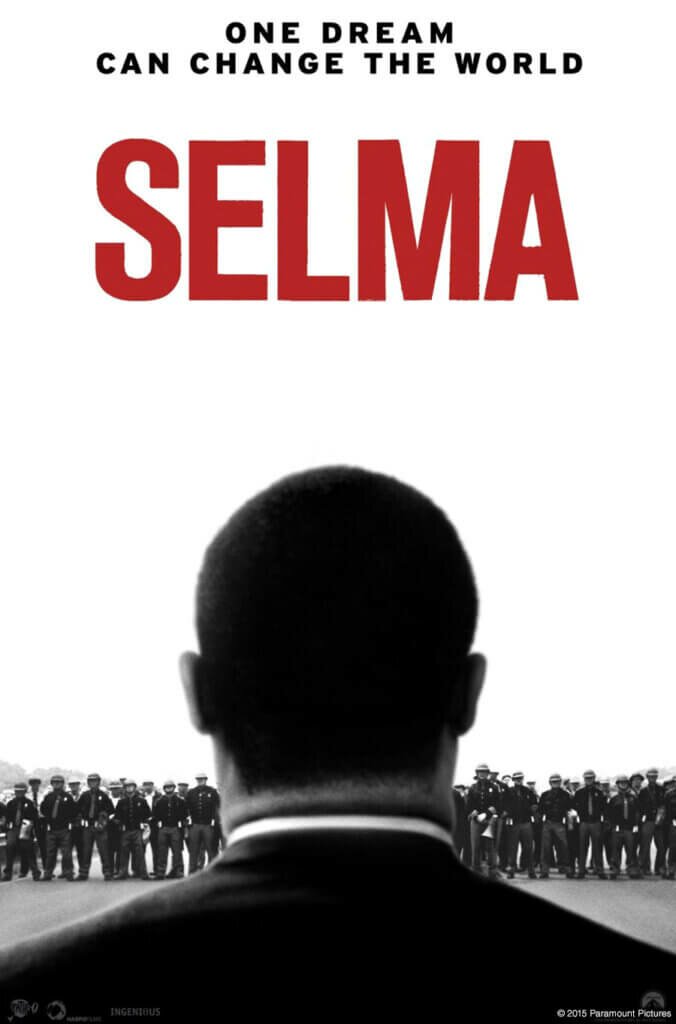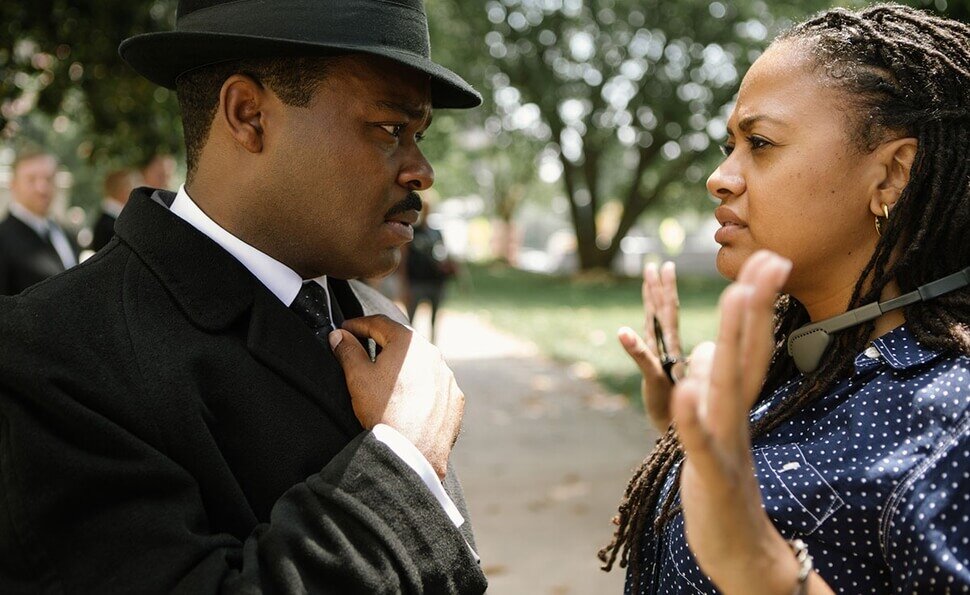Photo – David Oyewolo and Ava DuVernay on the set of Selma. Photo credit: Atsushi Nishijima
Ashleigh Coren is the Women’s History Content and Interpretation Curator at the Smithsonian National Portrait Gallery where she is assigned to “create, disseminate, and amplify the historical record of the accomplishments of American women” during the 19th centennial. When the 2020 OWOV Festival co-directors Bonnie Nelson Schwartz and Michon Boston met with Ashleigh about the Ava DuVernay tribute festival, there was a synergy around the 2014 film Selma. Even more enthusiasm for Ashleigh’s idea to create a visual interpretation of Ava DuVernay’s film online for the Smithsonian’s educational Learning Lab portal.

“Exploring Ava DuVernay’s ‘Selma’: History as Visual Culture,” curated and published by Ashleigh Coren, is designed for middle and high school students and educators. Anyone can access these resources to increase understandings of civil rights history through the visual arts. Selma is based on the real-life events around the tumultuous struggle in 1965 by Dr. Martin Luther King, Jr., members of SNCC and other civil rights activists to secure voting rights for all Americans against violent opposition. President Lyndon B. Johnson’s signing of the Voting Rights Act of 1965 marked a major victory for the civil rights movement.
The Selma Learning Lab is the fourth Ava DuVernay festival event for the 2020 OWOV Festival. The remaining events were cancelled or postponed in response to COVID-19-related concerns around public events. In the following interview with Ashleigh, she describes the inspiration for the project and the images she selected to highlight on the web page from several Smithsonian museum collections. OWOV Festival wants to thank Ashleigh, the National Portrait Gallery, and the Smithsonian Learning Lab for creating this engagement activity and resource for distance and lifelong learning. The interview has been edited for this blog post.
What is the Smithsonian Learning Lab? Who and what is it designed for?
AC: The Smithsonian Learning Lab was created by the Smithsonian Center for Learning and Digital Access to “share digital resources from across the Smithsonian’s 19 museums, 9 major research centers, the National Zoo, and more, for learning.” The Learning Lab includes subject focused collections created by educators from the Smithsonian as well as collections created by k-12 teachers. There are also additional resources available like video, audio, and activities for the classroom. Anyone with access to the internet can create an account and develop collections of their own!
What were some of the key moments in the SELMA film (or even the real-life stories) that inspired you while creating this project?
AC: There are so many stirring moments in the 2014 film, but nothing affected me more than the scene depicting the death of Jimmie Lee Jackson. We can never do enough to honor the men and women who participated in the movement. One of the best ways to do so is to continue to share their stories and make their work as visible as possible. Thankfully the Smithsonian is home to many images that document what happened and the numerous individuals that were present during the marches.
How many objects in the Smithsonian collection were selected for the SELMA learning lab collection? What was the criteria for selecting them?
AC: There are thirty-four images in the collection, mostly from the National Portrait Gallery. I’ve also included images from the National Museum of African American History and Culture, the National Museum of American History, and an audio recording from Smithsonian Folkways. The goal was to create a collection that highlights notable figures like John Lewis but also places the 1965 Selma to Montgomery voting rights marches within the greater context of the Civil Rights Movement.
How can teachers and students/learners best use the SELMA learning lab’s resources?
AC: In addition to the images I’ve also included thinking strategies to help facilitate discussion and encourage critical thinking. I think these strategies can help learners grasp how art can help them understand historical events in a thoughtful way.
What are your top 3 picks from the SELMA learning lab and why?
AC: Great question! The photo of John Lewis featuring other members of the Student Nonviolent Coordinating Committee by Danny Lyon, the photo of Odetta by Otto Hagel, and the portrait of James Farmer by Alice Neel. There is so much diversity when we think about the many individuals that made up the movement – students, musicians, clergy, housewives, etc. That’s one of the reasons why the movement was so effective, which is important to recognize.

